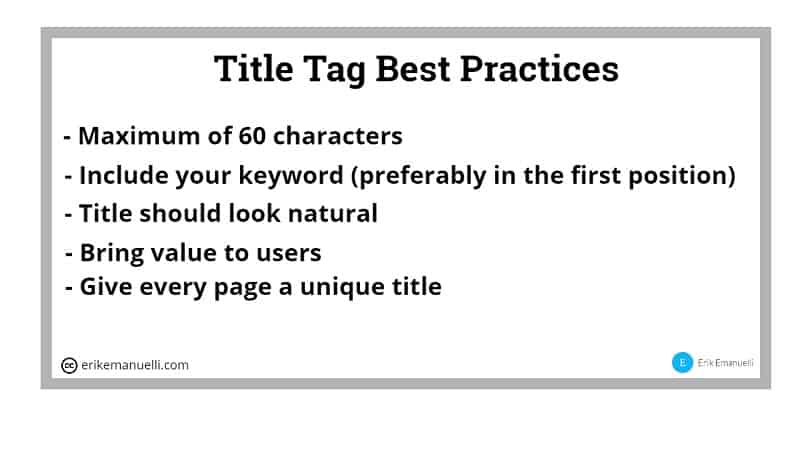On-Page SEO: The Foolproof Beginner’s Guide
Learn on-page SEO by following the tips in this guide.
Achieving a higher ranking in search results can lead to more website visitors, leads, and sales. But how do you go about making sure your website ranks high?
The answer lies in on-page optimization – getting the fundamentals right so your content stands out.
Search engine optimization (SEO) is an essential part of any online business, and it’s important to get it right.
Achieving a higher ranking in search results can lead to more website visitors, leads, and sales. But how do you go about making sure your website ranks high?
The answer lies in on-page optimization – getting the fundamentals right so your content stands out.
In this article, we’ll explore what on-page SEO involves and how you can use it to boost your rankings.
Index
What is On-Page SEO?
On-page SEO refers to the practice of optimizing individual web pages to rank higher and earn more relevant traffic in search engines. It involves creating content that’s optimized for both search engine algorithms and human readers. This includes:
• Keyword research – strategically researching and targeting specific keywords used by your target audience.
• Meta tags – using meta tags to add information about your page to search engine result pages.
• Content optimization – updating your content with relevant keywords and optimizing for readability.
• URL structure – using descriptive URLs that are easy to read and understand.
• Image optimization – adding appropriate alternative text (alt text) to images, as well as compressing image files for faster loading times.
Why is On-Page SEO Important?
On-page SEO is extremely important. First, it helps search engines understand your website and its content. Second, it also provides the opportunity to increase your rankings, as well as earn more relevant traffic from people searching for specific keywords.
When done correctly, on-page optimization can help you to gain an edge over the competition and stand out from the crowd.
How to Properly Do On-Page SEO
On-page SEO isn’t complicated, but it can take some time and effort to get right.
Here are the basics of how you can optimize your website for search engine success.
Basically, you want your target keywords to be placed strategically in specific areas of your content:
- In the Title Tag
- In the URL
- In the First 100 Words
- In the Meta Description
- In Sub-Headings
- In Your Images
- In the Internal Links
In the Title Tag
The Title Element, also known as the Title Tag, is one of the most important elements on a page. It should accurately describe what the page is about and include your main keyword.
Also, it should look natural and bring value to users.
Remember to avoid writing titles longer than 70 characters, as this can get cut off in the SERPs.
Finally, be sure to give each of your pages unique titles.

In the URL
Your URLs should be short, descriptive, and include your target keyword. This will help both search engine crawlers and users understand the subject of your page.
Additionally, you can use hyphens (-) to separate words in your URL so they are easier to read.
In the First 100 Words
The first few sentences of your content should include your main keywords. This helps search engines understand the topic of your pages and can also help them rank your content more accurately.
In the Meta Description
The meta description is an HTML tag that provides information about a page’s content. It should include your main keyword, as well as be compelling enough to entice users to click through to your website.
Bear in mind that meta descriptions can be any length, but it’s best to keep them between 150-160 characters.
The Google guide states that the search engine occasionally uses the meta description tag’s content to produce the displayed snippet in the SERPs, which appears right below the blue link.
So, it’s essential to create meta descriptions that are both descriptive and informative.

In Sub-Headings
Subheadings, also known as H tags, provide an additional opportunity to include your target keyword. They should be placed strategically throughout your content and have the same goal as the title tag – to accurately describe what the page is about and help users find relevant information quickly.
In Your Images
Adding ALT tags to your images can help search engines understand what the content on a page is about. This will also be beneficial if an image fails to load, as it will provide a brief description of the image instead.
Provide an appropriate name for your file (e.g., keyword1-keyword2.jpg) and use your target term in descriptive ALT texts to help search engines understand what the image is about.
Don’t forget to compress images to improve page loading speed.
In the Internal Links
Internal links are a great way to help search engines understand the structure of your website and direct users to other related pages on your site.
Whenever possible, use descriptive anchor text that includes keywords to make it easier for search engine crawlers to identify what the linked page is about.
Remember that relevance is the key to effective link building, so make sure your internal links are relevant to the content.
This also helps in improving the user experience, as visitors can quickly and easily access related pages on your website.
Conclusion
On-page SEO is a fundamental part of any successful digital marketing strategy. It may take some time to get right, but it’s worth the effort when you start seeing the results – more traffic, leads, and sales.
By following the tips outlined in this article, you can create content that stands out from the competition and ranks higher in search engine result pages.

Comments are closed.